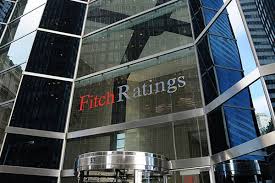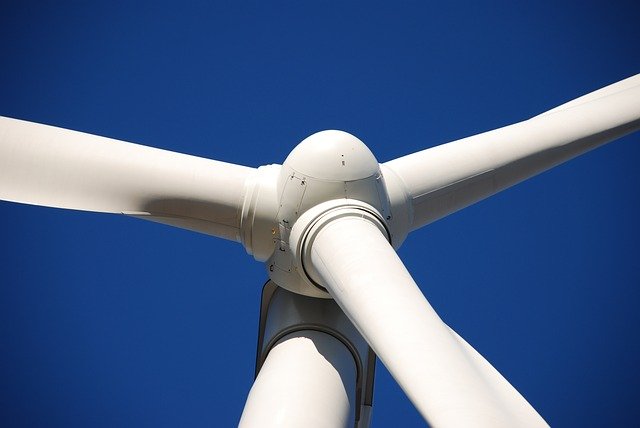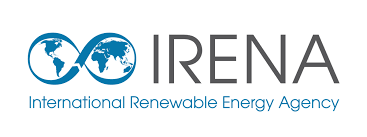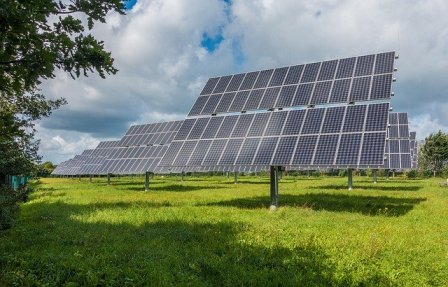
Energy Updates to 03/10/22. U.S. Rig Count is up 1 to 765
U.S. commercial buildings were consuming less energy per square foot as of 2018, according to latest EIA data
The average total amount of energy used per square foot in commercial buildings decreased by 12% from 2012 to 2018, according to the U.S. Energy Information Administration’s Commercial Buildings Energy Consumption Survey (CBECS).
The amount of energy used per square foot decreased in commercial buildings overall, particularly in buildings used for inpatient health care, offices, and education. Electricity consumption per square foot decreased by 14%, and natural gas consumption per square foot decreased by 11% from 2012 to 2018.
Other notable takeaways from preliminary consumption and expenditures data in 2018 include:
Electricity and natural gas continued to be the main energy sources for commercial buildings and together accounted for 94% of total energy consumed in the commercial sector in 2018.
Commercial buildings spent $142 billion on energy in 2018, averaging $1.47 per square foot.
Large buildings (over 100,000 square feet) were few in number but accounted for over one-third of the total energy consumed by commercial buildings.
Food service, food sales, and inpatient health care buildings consumed the most energy per square foot.
Buildings constructed since 2000 consumed more energy per square foot on average and were larger than older buildings.
The amount of electricity used per square foot was higher in hotter climates, and the amount of natural gas used per square foot was higher in colder climates. Read More

The U.S. Environmental Protection Agency announced it is nearly doubling the funds available for the first round of funding for clean school buses, from $500 million to $969 million. In response, Electrification Coalition Executive Director Ben Prochazka released the following statement:
“To reduce our dependence on oil for transportation, we must transition all vehicles to electric—especially the school buses that transport our children daily. The Electrification Coalition has been a leader in this effort, from organizing electric school bus roundtables to creating new collaborative purchasing programs to working at the city and state levels over the past decade.
“We’re thrilled to see many of our nation’s school districts commit to an electrified ride to school for our country’s most important commuters. Electric school buses will reduce kids’ exposure to toxic diesel emissions while providing significant cost savings for school bus operators—all while increasing our national and grid security.
“The Biden-Harris administration’s historic leadership in helping to create the EPA Clean School Bus program has allowed our nation to meet the EV moment. We’re excited to see the decision to nearly double the funding available for the first round of this five-year program, allowing more kids to get a cleaner ride more quickly.” Read More

This year’s winter gas season opens with extreme natural gas price levels and volatility, caused by unprecedented uncertainty of supply as Russia steeply curtails its pipeline deliveries to Europe. The result is considerable market tension in alternative sources of supply. Security of supply has become a top priority in Europe and other importing regions as a total cut-off in Russian flows to Europe cannot be ruled out, creating further tensions and demand destruction for all competing LNG importers.
The gas crisis triggered by Russia’s invasion of Ukraine in February 2022 has caused a series of market adjustments. European buyers have strongly increased their LNG procurement, resulting in market tightening and demand destruction in various importing regions. This has also had a visible impact on LNG contracting behaviours, with a return to more traditional features such as fixed-destination and longer-duration contracts. The European Union, whose member states are directly exposed to the threat of further supply cuts, has adopted a number of measures to enhance security of supply and market resilience ahead of the coming winter.
This quarterly report includes the IEA’s annual Global Gas Security Review and an analysis of short-term gas market evolution to 2023. Read More

PV installs explode despite hurdles – jump 87 GW, more to come.
Solar installations are likely to be up 38% year on year despite continued Polysilicon price hikes, and other rising costs, sanctions on China for using Uyghur forced labor to make solar panels, not to mention the US Department of Commerce block in early 2022 due to Antidumping accusations in Southeast Asia.
This is the key finding of PV installs explode despite hurdles – jump 87
GW, more to come, which is the new research paper published today by Rethink Energy.
Rising module costs, high energy prices and US’ and India’s protectionism
By the end of Q1 US installs seemed to be down by over 50%, before President Biden stepped in with his Emergency Authority to break the deadlock. Read More

Rethink Energy
The question of just how hydrogen will get around the world, and what it will cost, is key to putting in place global hydrogen infrastructure. A report out this week from Rethink Energy, part of Rethink Technology Research, shows that the bulk of the effort will be split between pipelines and liquid organic hydrogen carriers (LOHC), often transported in ships – and points to the limiting cost factors which shall define each transport use case.
The research has been compiled in consultation with planned hydrogen hubs using their “rules of thumb,” and cost estimates. As the sector emerges it is not just the cost of manufacture that will set limits on where hydrogen
facilities can be but the cost of transport will be over 50% of the equation, and matter far more than the cost of making hydrogen.
Importing hydrogen to resource-rich countries will add between $0.50 and $1.86 per kilogram, depending on the distance and the means through which it can be transported. With distribution accounting for nearly twothirds of the final cost of hydrogen to the customer, these delivery mechanisms will dictate competition throughout the hydrogen market. Read More

Natural Gas market adjustments show prices to fall after 2024 Europe has been left spinning after Russia cut down on natural gas exports and is now searching for alternatives. Falling supply and increased demand caused the price of natural gas to spike up, but as a result Rethink predicts that demand will decrease, and the price will adjust accordingly from 2024.
This is according to a new research paper from Rethink entitled Russian war will force gas usage to plummet post 2024, which analyzed the natural gas market based on electricity generation, home heating and industrial uses in the world’s top electricity using nations. Taking into account the readjusted positions of various European governments and their efforts to address the current crisis, the report compares the “what would have been” trend of natural gas with the “what will actually happen” trend as a result of the war. We expect natural gas demand to drastically fall as a direct result of the Russo-Ukrainian conflict despite it being previously on course to gradually increase by 9% usage globally by 2031. Natural gas usage is expected to shift towards industrial processes until hydrogen will take over while we wait for renewables to scale up and cover electricity demand and home heating. Read More

Saudi Arabia’s preliminary budget statement for 2023 released last week shows its projected oil revenues are based on a conservative price for Brent oil, analysts said.
According to Al Rajhi Capital, oil revenues for the kingdom in 2023 could reach SAR 754 billion “Based on our assessment, the government’s 2023 budgeted revenues are likely based on an assumption of Brent at around $76 a barrel,” said Mazen Al Sudairi, head of research at the brokerage.
According to Emirates NBD, the Saudi finance ministry “has likely based projected revenues on a conservative oil price assumption of around $80/barrel, which is much lower than our forecast of an average of $105/barrel in 2023.” Read More
QIA (Qatar Investment Authority), the sovereign wealth fund of the State of Qatar, has today agreed to invest EUR 2,427.6 million in RWE AG (RWE) to support RWE’s accelerated ‘Growing Green’ strategy. RWE will issue a mandatory convertible bond to a subsidiary of QIA. The bond will be converted into new ordinary bearer shares expected to represent just under 10% of RWE’s existing share capital (and approximately 9.09% of the enlarged share capital post conversion).
The proceeds of the mandatory convertible bond will be applied towards the acquisition of Con Edison Clean Energy Businesses, which will position RWE as one of the leading renewable energy companies in the U.S. Read More

RWE AG, one of the world’s leading renewable energy companies, signed a purchase agreement with Con Edison, Inc. to acquire all shares in Con Edison Clean Energy Businesses, Inc. (Con Edison CEB). Headquartered in Valhalla, New York, Con Edison CEB is a leading operator and developer of renewable energy plants in the United States, with about 3 gigawatts (GW) of operating capacity, thereof 90% in solar energy, and a strong development pipeline of more than 7 GW.
The transaction marks a milestone in RWE’s growth ambitions in the United States. Once completed, this will make RWE the number 4 renewable energy company and the second largest solar operator in the United States, one of the largest and fastest growing markets for renewable energy globally. The Inflation Reduction Act sets a stable and reliable 10-year framework for investments in clean energy. Read More

Nigeria’s capacity to increase its crude output fell by 37% in less than three years, The Punch newspaper said, citing OPEC statistics.
The oil group’s September 2022 monthly oil market report said that the country’s oil rig count dropped to 10 in August 2022, from 16 in 2019.
Rig counts of other member countries such as Algeria, Iran, Iraq, Kuwait, Saudi Arabia and UAE stood at 33, 117, 54, 27, 68 and 50, respectively. OPEC data showed that the West African nation’s crude oil output fell to 900,000 barrels per day last month. The country’s crude grade, Bonny Light, fell 10% to $106 per barrel in August 2022 from $117 per barrel in July 2022. Read More

Genel Energy plc announced the appointment of Paul Weir as Chief Executive Officer, and as a member of the Board of Directors, with immediate effect. Paul, who was previously Chief Operating Officer before being made Interim Chief Executive Officer in June this year, joined Genel in January 2020. Paul had worked for more than 30 years in upstream E&P with experience in the North Sea, South East Asia and Africa. Before joining Genel, Paul was Group Head of Operations and Safety at Tullow Oil. Prior to that he had spent 13 years at Talisman Energy, ultimately as VP Production and Exploration. He has also worked in a variety of roles at Total, Occidental, Elf and Nippon Oil. Read More

Sabah Shell Petroleum Company Ltd (SSPC) announced it has taken a final investment decision (FID) on Phase 4 of the Gumusut-Kakap-Geronggong-Jagus East (GKGJE) deepwater offshore development project, with its co-venturers.
SSPC is the operator of the Gumusut-Kakap semi-submersible Floating Production System (GK-Semi FPS) located off the coast of Sabah, offshore Malaysia. GKGJE Phase 4 development is a subsea tie-back project that is expected to achieve first oil in late 2024. It involves the drilling of four wells and ties back to the GK-Semi FPS.
“Taking FID for GKGJE Phase 4 reaffirms Shell’s continued commitment to deliver competitive and sustainable projects to meet the world’s energy demands. I would like to thank PETRONAS, our co-venturers and the government for their support in achieving this milestone,” commented Ivan Tan, Chairman of Shell Malaysia and Senior Vice President for Upstream Malaysia.
GK Phase 3 Achieves First Oil Delivery end July 2022
On a related note, first oil delivery for an earlier phase of the project, Phase 3, was achieved on schedule earlier, on July 31, 2022. Phase 3 consists of two oil producer and two water injection wells to enhance the recoverable oil volumes from the field. Tan said, “We are pleased to be able to achieve first oil from GK Phase 3 on schedule. This has been a truly remarkable team effort to overcome disruptions presented by the COVID-19 pandemic.”
Located in water depths of 1,200 meters, Gumusut-Kakap was the first deepwater offshore project for Shell in Malaysia and began production via the GK-Semi FPS in 2014.
The GKGJE project is a joint venture among Sabah Shell Petroleum Company Ltd and Shell Sabah Selatan Sdn. Bhd, ConocoPhillips Sabah Ltd., PETRONAS Carigali Sdn. Bhd., PTTEP Sabah Oil Limited, PT PERTAMINA Malaysia Eksplorasi Produksi and others. Read More
Sarawak Shell Bhd (SSB), together with its partners PETRONAS Carigali Sdn Bhd and Brunei Energy Exploration, celebrated the mechanical completion of Engineering, Procurement and Construction (EPC) of fixed offshore structure works for the Timi Field Development Project in a ceremony at the Brooke Dockyard & Engineering Works Corporation (Demak Yard), Kuching, Sarawak, witnessed by YAB Datuk Patinggi Tan Sri (Dr) Abang Haji Abdul Rahman Zohari bin Tun Datuk Abang Haji Openg, Premier of Sarawak. The Timi Field Development Project is being developed as part of the SK318 Production Sharing Contract with SSB as the Operator.
The newly completed substructure and topsides will then be loaded up and transported to the Timi field, situated approximately 200 kilometres (km) off the coast of Sarawak, Malaysia, for installation. The Timi development features SSB’s first wellhead platform in Malaysia that is powered by a solar and wind hybrid renewable power system. This unmanned platform is approximately 60% lighter than a conventional Tender Assisted Drilling (TAD) wellhead platform. Read More

Nissan Motor Co., Ltd. today announced that Tsuyoshi Tatsumi has been appointed to an advisor position reporting to Takashi Hata, senior vice president and chairperson of Management Committee for Affiliate Companies effective October 1st 2022. With this position change he will no longer be a corporate officer in Nissan.
Until a replacement is named, Stephen Ma, chief financial officer (CFO) will have direct oversight over Investor Relations. Read More–>

Deteriorating prospects for global demand in 2023 will add to external risks for many African sovereigns by dampening export prospects, says Fitch Ratings. Nonetheless, risks will vary across our rated portfolio. Fitch now expects global GDP to grow by just 1.7% in 2023, down from our previous forecast of 2.7% in June 2022. Growth in the US and eurozone will be close to 0%. Growth in China, at 4.5% in 2023, will be stronger than the 2.8% that we expect this year, but will still mark a relatively weak recovery. Poor growth prospects in these three economic blocs will constrain export prospects in other markets, including those in Africa. It could also depress export-oriented investment in Africa. Read More
Rising interest rates and falling securities valuations have increased the likelihood of losses for developed market central banks that have engaged in asset-purchase programmes, says Fitch Ratings. This may affect their ability to contribute to government revenues, and there is a risk that in some cases sovereigns could be called upon to restore central bank equity positions.
Central banks are not part of the consolidated government balance sheet, but tend to distribute profits to their governments. They are usually profitable, as the rates they pay on their liabilities tend to be lower than the rates they earn on assets – not least because of seigniorage earnings from the creation of cash. However, the build-up of assets on central bank balance sheets in recent years has complicated this picture. The process initially lifted profits, but a number of central banks now appear likely to record losses for at least the next year or two.
The recent rise in interest rates in most developed markets means that some central banks are now paying more on their liabilities to financial institutions than they are earning on their securities holdings, increasing the risk of losses. The Fed’s July 2022 Open Market Committee, for example, reported that staff project net income is likely to turn negative in the next few months. Read More

Octopus Energy Generation, the renewable generation arm of Octopus Energy Group, announces two wind farm deals with a combined capacity of 57 MW, to accelerate German green power and reduce reliance on imported gas. In the first deal, Octopus Energy Generation acquired a wind farm from renewables developer JUWI and wiwi consult, on behalf of its Sky fund (ORI SCSp). The wind farm, which is currently under construction with wiwi as the contractor, is located in Wörrstadt near Frankfurt. It will be operational in 2023. The 22.4 MW wind farm has 4 Vestas turbines which are each 241m tall, higher than the Gherkin building in London and the Cathedral in Cologne. In the second deal, Octopus Energy Generation has agreed to acquire the Leeskow wind farm in Oberspreewald-Lausitz, near Dresden from wind farm developer UKA, on behalf of Octopus Renewables Infrastructure Trust (ORIT). The 34.6 MW wind farm has 7 Nordex wind turbines and became fully operational in September. These two wind farms combined will be able to power over 41,000 homes, the equivalent of avoiding over 55,000 tonnes of CO2 emissions every year. Read More

Member countries of the Global Geothermal Alliance (GGA), agreed to step up global efforts in scaling up the deployment of geothermal energy. The San Salvador Declaration, adopted today at the GGA’s second high-level conference in El Salvador, supports continued cooperation in achieving the Alliance’s goal of a five-fold growth in the installed capacity for geothermal power generation and three-fold growth in geothermal heating by 2030. Read More

Solar photovoltaic (PV) has emerged to be the leading employer in the renewable energy sector, both in global number of employees and in gender balance. In 2021, the solar PV industry employs 4.3 million people—one-third of all renewable energy jobs worldwide. Women account for 40% of this number. It is almost double the share of women employed in the wind industry (21%) and the oil and gas sector (22%). It is also higher than the average share of women employed in all renewables sectors, which is 32%.
The International Renewable Energy Agency (IRENA)’s new report, Solar PV: A Gender Perspective, finds that women fare best in solar PV manufacturing, representing 47% of the workforce. Service providers and developers follow with 39% and 37%, respectively, while solar PV installers perform the least, with barely 12% of the segment’s workforce. Read More
Conference Call Information:
Chevron Corporation (NYSE: CVX), one of the world’s leading energy companies, will hold its quarterly earnings conference call on Friday, October 28, 2022, at 11:00 a.m. ET (8:00 a.m. PT).
OilandGasPress Energy Newsbites and Analysis Roundup |Compiled by: OGP Staff, Segun Cole @oilandgaspress.
Disclaimer: News articles reported on OilAndGasPress are a reflection of what is published in the media. OilAndGasPress is not in a position to verify the accuracy of daily news articles. The materials provided are for informational and educational purposes only and are not intended to provide tax, legal, or investment advice.
Information posted is accurate at the time of posting, but may be superseded by subsequent press releases
Please email us your industry related news for publication info@OilAndGasPress.com
Follow us: @OilAndGasPress on Twitter |

Oil and gas press covers, Energy, Climate, Renewable, Wind, Biomass, Sustainability, Oil Price, LPG, Solar, Marine, Aviation, Fuel, Hydrogen, Electric ,EV, Gas, News and Analysis

